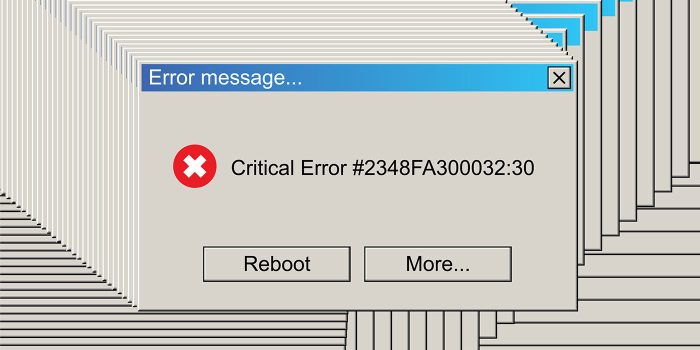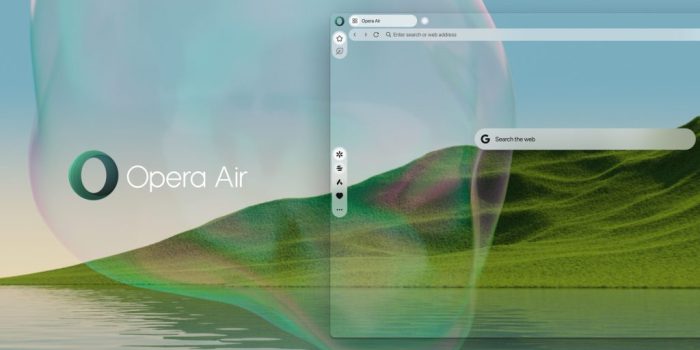Error alerts are a crucial part of any software or system, serving as the interface…

The Power of the Human Face in Web Design

July 10, 2024
First impressions online are made in just a few seconds, so nailing your web design is crucial. Among the many elements to play with, one stands out for its universal appeal and psychological impact: human faces.

From the moment we’re born, we’re wired to recognize and respond to faces, making them a powerful tool in visual communication. Understanding this power can empower you to make more impactful design decisions.
Whether you’re a seasoned web designer looking to up your game or a business owner wanting a more relatable website, understanding how to use human faces can give you a serious edge. So, let’s explore how adding a simple human touch can transform your web design and make it more engaging and memorable for your users. The transformative power of human faces can inspire you to implement these strategies in your own designs.
The Psychological Impact of Human Faces
Human Connection
Humans are social creatures, and our brains are built to recognize and respond to faces from a very young age. This connection is deep-rooted in our evolution; facial recognition helps us identify friends, family, and potential threats. When users see human faces on a website, it taps into this natural desire for connection. This creates an immediate sense of familiarity and comfort, making visitors more likely to stick around and explore.
Trust and Empathy
Seeing a human face can evoke feelings of trust and empathy. Faces convey emotions and intentions, helping us gauge the sincerity and credibility of the person we’re viewing. In web design, this means that adding human faces can make your brand seem more trustworthy and approachable. For instance, showing your team members on the ‘About Us’ page or featuring customer photos in testimonials can help build a connection with visitors, making them more likely to trust your content and engage with your site.
Attention-Grabbing
Faces naturally draw our attention. Lots of psychological studies show that human faces are one of the first things we notice when looking at an image. This phenomenon, known as “face pareidolia,” ensures that faces stand out even in busy environments. Face pareidolia is our brain’s tendency to see faces in random patterns, and it’s a powerful tool in web design. Placing a human face strategically can guide a user’s gaze towards essential elements, like a call-to-action button or critical message, ensuring these get the attention they deserve.
Emotional Engagement
Human faces can also ramp up emotional engagement. Emotions are contagious; a smiling face can make us feel happier, while a concerned face can elicit empathy. By using faces that reflect the desired emotional response, web designers can influence the mood and attitude of their visitors. For example, a non-profit might use images of people affected by their cause to evoke empathy and drive donations. In contrast, a travel company might use joyful faces to inspire excitement and a sense of adventure.
Benefits of Using Human Faces in Web Design
Increased Engagement
One of the most significant benefits of using human faces in web design is boosting user engagement. Faces are attention-grabbing and can draw visitors into the content. Websites with friendly, welcoming faces on their landing pages often see lower bounce rates. Users are more likely to stay, explore, and interact with a site that feels personable and relatable. For instance, e-commerce sites that use customer photos to showcase products often see higher click-through rates and increased time spent on the site.
Improved Conversions
Human faces can significantly impact conversion rates. Trust and relatability conveyed through faces can make users more comfortable taking actions like signing up for a newsletter, making a purchase, or filling out a contact form. Studies show that websites featuring testimonials with photos of real customers or team members often see higher conversion rates compared to those with just text. Potential customers can see and relate to the experiences of others, reinforcing the credibility of the product or service.
Brand Personality
Human faces help convey the personality and values of a brand. They add authenticity and warmth that abstract graphics and text alone can’t achieve. Businesses can create a more relatable and human image by showcasing the people behind the brand—whether through team photos, behind-the-scenes glimpses, or user-generated content. For example, a local bakery that shares photos of its staff and customers enjoying their products creates a sense of community and connection, enhancing brand loyalty. Similarly, a tech startup that features its team members working on innovative projects can convey a sense of creativity and dedication.
Emotional Connection
Emotional connections are essential in marketing, and human faces are a powerful tool for creating these connections. A well-chosen image of a happy customer or a passionate team member can evoke positive emotions, making the brand more memorable and appealing. For instance, a healthcare website that features images of compassionate doctors and smiling patients can foster a sense of care and trust, making visitors more likely to choose their services over competitors. These emotional connections can drive deeper engagement and long-term loyalty.
Enhancing User Experience
Incorporating human faces can enhance the overall user experience by making websites more intuitive and user-friendly. Faces can serve as visual cues that guide users through the site. For example, a face looking towards a call-to-action button can subtly direct a user’s attention to that area, improving the likelihood of interaction. This strategic use of faces can simplify navigation and make the website feel more interactive and engaging.
Differentiation
In a crowded digital landscape, standing out is essential. Using human faces can help differentiate a brand from its competitors. While many websites rely on generic stock photos or abstract designs, those that incorporate genuine, relatable faces are more likely to leave a lasting impression. This uniqueness can be a significant advantage, especially in industries where competition is fierce and customer loyalty is hard to achieve.
In summary, using human faces in web design offers numerous benefits, including increased engagement, improved conversions, enhanced brand personality, stronger emotional connections, better user experience, and differentiation in the market. By leveraging the natural human tendency to connect with faces, web designers can create more compelling websites.
Common Pitfalls to Avoid
Overuse
While human faces can enhance a web design, overdoing them can have the opposite effect. Too many faces can clutter a webpage, making it overwhelming and distracting for users. This can dilute the impact of each face and ensure the user understands where to focus their attention. It’s crucial to strike a balance by using faces strategically and sparingly, ensuring each one serves a clear purpose and enhances the overall design rather than detracting from it.
Inconsistency
Inconsistency in the style, quality, or type of images used can undermine the professionalism and cohesiveness of a website. For example, mixing high-quality professional photos with lower-quality snapshots can create a disjointed and unprofessional appearance. It’s essential to maintain a consistent aesthetic throughout the website. This includes ensuring uniform lighting, composition, and editing style for all images. Consistency helps build a cohesive brand identity and provides a seamless visual experience for the user.
Lack of Relevance
The faces used in web design should be relevant to the content and context of the site. Using random or irrelevant images can confuse users and detract from the message you’re trying to convey. For instance, a corporate website featuring casual, unrelated images might appear unprofessional. Ensure that your faces align with the site’s purpose and audience. Images of healthcare professionals and satisfied patients would be appropriate for a healthcare site, while a tech startup might feature its team working on projects or interacting with technology.
Stock Photo Clichés
Relying too heavily on stock photos can result in a generic and impersonal website. Many stock photos lack authenticity and can appear staged or artificial, negatively impacting user trust. While stock photos can be helpful, using authentic images of your team, customers, or community whenever possible is better. Authentic photos are more likely to resonate with users and build a genuine connection. If stock photos must be used, select ones that feel natural and relatable, avoiding overly posed or stereotypical images.
Cultural Insensitivity
Cultural sensitivity is crucial when selecting images of faces for a website. It’s essential to represent diversity and avoid culturally insensitive or stereotypical images. This involves considering the cultural context of your audience and ensuring that the photos reflect a respectful and inclusive approach. For example, a global brand should include faces from different ethnic backgrounds, genders, and ages to reflect its diverse audience. Missteps in this area can alienate users and damage the brand’s reputation.
Ignoring Accessibility
Accessibility should always be a priority in web design, which extends to image use. Ensure that all images, including those of faces, have appropriate alt text that describes the content for visually impaired users. This not only improves accessibility but also benefits SEO. Additionally, consider the emotional impact of the faces used; for instance, avoid images that might be distressing or triggering for some users.
Misalignment with Brand Message
The faces you choose should align with your brand message and values. For example, a company promoting eco-friendliness should avoid images that contradict this message, such as photos that suggest wastefulness or disregard for the environment. Ensure that the faces and expressions used convey the emotions and values that your brand stands for. Consistency in this area helps reinforce your brand’s identity and message.
By being mindful of these common pitfalls, web designers can effectively leverage the power of human faces to enhance user experience, build trust, and create a compelling, professional, and inclusive website.
Conclusion
Using human faces in web design is a game-changer that taps into our natural psychological responses to boost user experience and engagement. Faces help create a connection, build trust, and bring out empathy, making a website feel more relatable and personable. The benefits are clear: more engagement, better conversion rates, a more assertive brand personality, and a more emotionally engaging user experience. But to get the most out of it, you must avoid common pitfalls like overuse, inconsistency, irrelevance, relying too much on clichéd stock photos, cultural insensitivity, ignoring accessibility, and misalignment with your brand message.
When used thoughtfully, human faces can transform a website, making it more effective and memorable. Focus on authenticity, relevance, and consistency. Aim to create a cohesive visual story that aligns with your brand values and resonates with your audience.
The goal is to make a web experience that feels human and inviting, encouraging users to connect with your content and take the actions you want them to. By paying attention to the details and avoiding common mistakes, you can harness the power of human faces to boost your website’s impact and achieve your digital goals.
Simon Sterne
Simon Sterne is a staff writer at WebdesignerDepot. He’s interested in technology, WordPress, and all things UX. In his spare time he enjoys photography.
#Power #Human #Face #Web #Design


